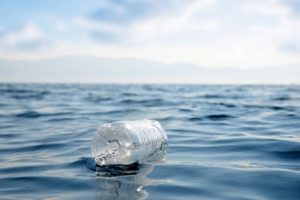When you take a cool, refreshing sip from your store-bought water bottle, have you ever stopped to think about where that water comes from and where that bottle goes? With increasing reports questioning the safety of drinking local tap water due to the dangers of growing pollution, chemical contaminants, and less-than-ideal municipal water treatment systems, many people have stopped drinking tap water and replaced it with bottled water. As bottled water sales soar, many people have switched to drinking it without knowing where it comes from or if it is safe or healthy.
Is Drinking Bottled Water the Best Choice?
It is staggering to see reports of the significant worldwide impact of bottled water on our environment and health. The global rise begs the question: Do vital hidden costs, such as health risks and environmental concerns, come with drinking bottled water?
With the sad and alarming news stories of harmful chemicals and contaminants in bottled water emerging daily, it is time to rethink choosing bottled water as a safe and economical drinking water choice.
So the next time you reach for that plastic bottle of water, consider that it carries a much higher cost than the store price, and it is also essential to know what happens to all those water bottles once you drink that last sip and toss away the bottle.
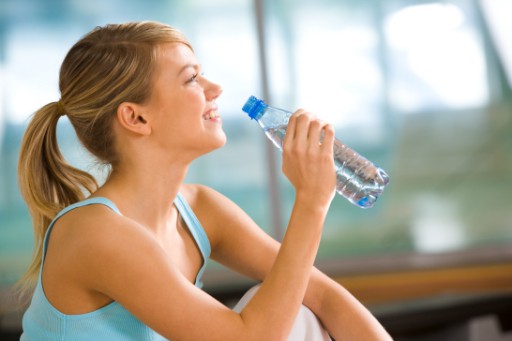
Where Does Bottled Water Come From?
It is shocking to learn that bottled water can come from many varied sources, and one of those sources can be tap water! Today, more than ever, it is critical to check the source and filtration process used to produce the bottled water you are drinking.
Generally, most bottled water comes from two sources: the first is spring or mineral water, and the second is filtered or treated water. The bottles sold as spring or mineral water claim to come from an underground water source not connected to the main municipal water supply. Mineral or spring water may remain untreated or may use processes such as added ozone for disinfection or carbon for carbonation.
The second source often comes from municipal aquifers, wells, or tap water. Many bottled water companies filter, chemically treat, or irradiate the water, making the water more drinkable. So, in many countries, bottled water may be tap water that has been treated or irradiated to remove some minerals, chemicals, and chlorine.
Although tap water in Europe and North America is deemed safe for drinking, there are still places where municipal water is not safe, and other drinking water alternatives are necessary. One such option is supplying residents with bottled water until municipal water is deemed drinkable. However, giving communities bottled water for extended periods may be required, but it is costly and increases human and environmental health risks.
Different countries have different bottled water standards and regulations, some much more stringent than others. In Canada, regulations are set by the Canadian Food Inspection Agency and Health Canada; in the United States, the FDA ( Food and Drug Administration) sets the regulations on bottled water, and the European Union sets standards with the EU Drinking Water Directive.
For example, in the United States, despite the EPA’s stringent regulations for drinking water safety, some communities cannot meet the regulations and provide potable water for residents, so residents are given bottled water. However, the bottled water industry does not follow the EPA’s drinking water standards; it is subject to the FDA guidelines that are notably less stringent. Without stringent water bottle guidelines or regulations, it is hard to know just how pure the bottled water you drink is.
It is an unnerving thought that the bottled water you and your family drink could come from any source and be heavily treated to make it fit for human consumption. So, beware that bottled water does not guarantee pure, clean, and safe drinking water.
The Hidden Costs Of Drinking Bottled Water

The bottled water industry has grown exponentially in the last 10-20 years, and make no mistake, it is a business that produces a very hefty profit. As the growth of the bottled water industry climbs steadily, consumers need to be aware of the hidden costs and dangers that drinking bottled water is producing throughout the world. Consider the substantial costs of manufacturing, advertising, and transportation of well-known and not-so-well-known bottled water brands and how they further drive up prices. The year 2011 was a massive year for sales, with over 91 billion gallons of bottled water sold worldwide.
Individual-sized bottled water in the U.S. can cost anywhere from $0.25 to $5.00 per bottle, where, surprisingly, the production of the cap, label, bottle, and marketing is responsible for over 75% of the cost. What does this say about the money spent to ensure safe drinking water? Imported bottled waters, such as brands like Perrier, Fiji, or Evian, spend vast amounts on advertising, marketing, and transportation to maintain local and international sales.
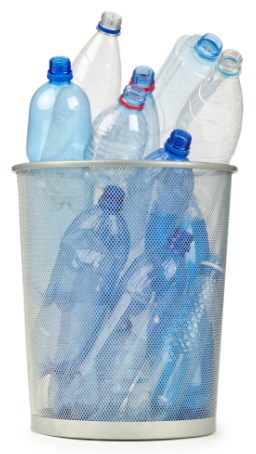
It is a known fact that for every disposable water bottle that makes it to be recycled, at least 4-5 bottles end up in the garbage. Landfills in the United States are filled with well over 2 million tons of water bottles that could have been recycled.
Another jarring fact is what it takes to make these bottles. Large quantities of oil go into the manufacturing of water bottles; consider that it takes double or over three liters of oil to produce a one-liter water bottle. In the United States alone, over 1.5 million barrels of oil are required to manufacture water bottles annually. Many plastics used for bottles are made mainly from fossil fuels, many of which are produced by major oil and gas companies. These oils and chemicals can leach into the water bottles, causing unknown exposure and health issues to consumers. Although Europe and North America are the largest consumers of bottled water, the issues and impacts now stretch across the globe.
In the Arctic, with no industry, one would think the water would be pristine and crystal clear for drinking, but this is not the case. The waters of the Arctic act as a sink or reservoir for many chemicals, and the frigid region and icy waters trap many varied toxic substances in the water, air, and the surrounding environment. The Arctic water has been called a chemical soup contaminated with high levels of harmful chemicals, and one of its biggest polluters is plastics and the chemicals used to make them, including the forever chemical PFAS. Recent research estimates that over 79,000 tonnes of plastic churn in a 1.6 million square kilometer range of the North Pacific, also known as the Great Pacific Garbage Patch.
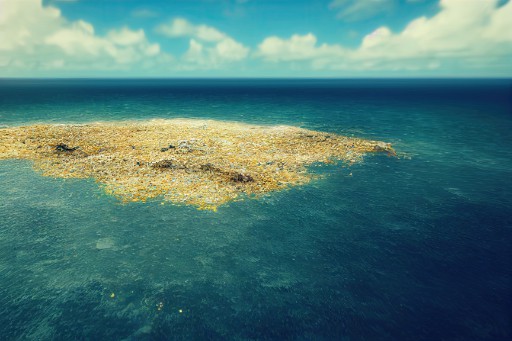
Another current study states that in 2014, there were approximately 5 trillion plastic particles polluting the oceans, whereas today, it has skyrocketed to 170 trillion. This is not a static issue but a continuously growing concern. Research indicates that without changes, the near future will see more plastic in our oceans than fish.
The rate at which these plastics fill and pollute our planet is highly alarming, considering we have only been making and using plastics since the 1950s. Trying to clean up plastic pollution comes with a long and heavy price tag. Incinerating plastic is not the answer, as incineration produces toxic fumes. Recycling is an option but only for certain plastics, so approximately 1 out of 5 bottles are recycled while the rest become garbage.
Although plastic does not fully degrade (for over 1000 years), it does break down into smaller pieces known as microplastics, so whether it is large or small, both plastics and microplastics create harmful waste and pollution.
Hazards of Plastic Water Bottles to Animal and Aquatic Species
Large and small plastics are proving deadly to many animals, including much marine life. For example, larger plastics are plentiful, easily ingested, and can cause illness, injury, or entangle animals, while smaller marine animals knowingly and unknowingly consume tiny beads of toxic microplastics. Aquatic animals are also experiencing hazardous health issues and deformities (some fatal) due to these microplastics and the chemicals used to make them.
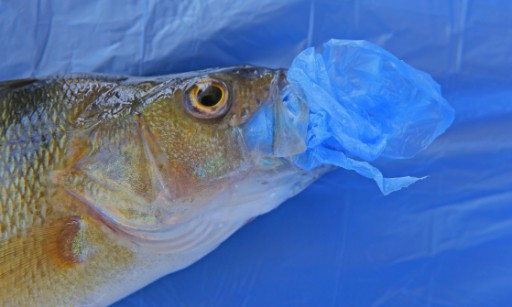
Another example is the Arctic polar bear; it has become known as one of the most plastic-contaminated species, causing many health issues. The Polar bears’ exposure to plastics brings health risks and issues to the Inuit that hunt them. Hunting polar bears has resulted in laboratory testing that shows higher blood and breast milk levels of chemical plastic concentrations in the Inuit hunters than in their southern communities. Knowing that these plastics accumulate, harm, and even kill animals, shouldn’t we find a better alternative to using water bottles?
Harmful Human Health Effects Of Plastic Bottled Water

Drinking from plastic water bottles opens the door to exposure to various chemicals, including harmful chemicals such as BPA (Bisphenol A) and PFAS (Polyfluoroalkyl). The FDA has only recently begun to regulate bottled water for E. Coli contamination and ban the use of the toxic chemical BPA. Although prohibited in certain countries, BPA is still used in water bottle production in others and is linked to fertility issues, heart disease, cancer, and altered brain development.
So, when you quench your thirst with a cold bottle of water, be aware that it may contain several contaminants that make their way into the water you are consuming.
Although some plastic water bottles may no longer contain BPA, most chemicals replacing BPA have not been tested for safety. Current reports document that when these newly developed replacement chemicals combine, they can produce even more dangerous and harmful human health effects. There are thousands of synthetic PFAS substances used around the world, but only a small group have been tested and deemed safe for use. These substances, also known as “forever chemicals,” are significant in making plastics today, including water bottles.
We hear reports daily of new studies alerting consumers to dangerous health and environmental concerns of drinking bottled water. A recent international study discovered that over 90% of the water bottles tested contain moderate to high microplastics such as nylon and polyethylene terephthalate (PET). PET is known to alter endocrine hormones. Current studies show bottled waters also contain harmful contaminants such as pharmaceuticals, molds, chromium, phthalates, arsenic, lead, and trihalomethanes, all known to cause serious health issues, including heart disease and cancer. So, switching to bottled water can carry a heavy load of contaminants and concerns.
Drinking bottled water for individuals more sensitive to chemical-tainted water increases the risk of further health concerns. Consider seniors, children, infants, pregnant women, and the immune-compromised all have a greater chance of added harmful health issues from consuming bottled water.
Another health concern is where and how bottled water is stored. It can make a difference; for instance, bottled water stored for long periods in a warm area or heated in the sun may cause increased leaching of chemicals from the plastic into the water. Frigid, icy waters hold and trap plastics and microplastics, while temperature changes can produce plastic weathering and breakdown, increasing risks and exposure.
Switching From Bottled Drinking Water
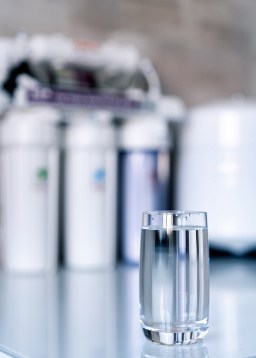
With the social, economic, and environmental impact drinking bottled water brings, it is no surprise that there are calls to ban bottled water. With the high costs of bottled water, there must be other clean water choices with a safe, less costly, and lighter carbon footprint. The only way to prevent bottled drinking water from seeping into surrounding soil and waterways and filling landfills is to stop buying them.
It is essential to drink clean, pure water to help remove toxins and keep you and your family healthy. Reverse osmosis is the most common and affordable way to transform tap water into safe, high-quality, purified drinking water. A Reverse Osmosis Water Filtration System is an excellent choice to replace drinking bottled water.
Consider A Reverse Osmosis Water Filtration System
Reverse osmosis filtration systems are easily installed in your home and provide clear, clean, pristine drinking water that has proven to be 99% pure of harmful chemicals, minerals, heavy metals, viruses, and bacteria. A huge advantage over bottled and tap water is that a reverse osmosis system does not use any harsh chemicals or treatments to purify the water. Another significant advantage is the convenience of a reverse osmosis system, not having to go to the store to purchase those heavy cases or giant jugs of bottled water, which saves on gas and grocery bills.
.
The reverse osmosis process uses pressure to push water through a semipermeable membrane that filters and removes contaminants and washes them away, leaving only pure water. The pure RO water is drawn from an exclusive reverse osmosis tap installed at your kitchen sink, and a dedicated RO water line can also be installed in your refrigerator’s cold water dispenser.
Benefits of Reverse Osmosis
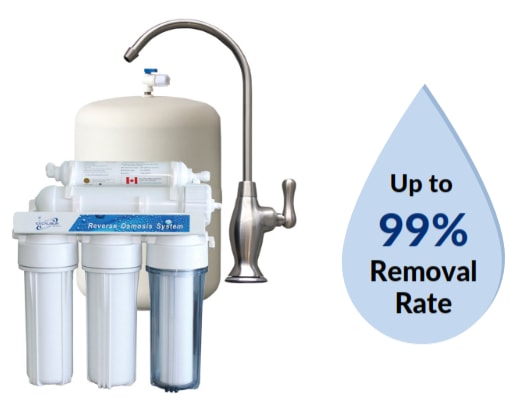
Installing a Reverse Osmosis system in your home has numerous health, environmental, and cost benefits:
- Removes 99% of harmful chemicals and contaminants
- Removes Lead
- Removes Chlorine
- Removes Bacteria
- Removes Arsenic
- Removes E. Coli
- Reduces Sodium
- Removes Toxins from the Body
- Removes VOCs (Volatile Organic Compounds)
- Less Expensive than Buying Bottled Water
- Good for Pets And Plants
- Easy to Install and Maintain
- RO Water Filtration is Green and Clean for the Environment
- Looks Crystal Clear and Tastes Delicious
- No Chemicals are used with RO Filtration Systems
- Can be Hooked up to the refrigerator’s water dispenser and ice maker
These are only some benefits of switching from drinking store-bought bottled water to an in-home reverse osmosis system. Drinking RO water provides the purest water with many health benefits, which may help protect against ailments such as colds, urinary tract infections, kidney stones, and bladder cancer.
Cost Benefits of Using Reverse Osmosis
Reverse Osmosis filtration systems are an economical and environmentally friendly choice for safe, great-tasting drinking water. They are low maintenance and only require simple and easy cartridge or filter replacements when needed. Most RO systems do not require electricity and use a chemical-free process.
Whether you have a large or small home and family, there are several reverse osmosis models to fit your home and budget. Once you have purchased the initial RO system, it costs pennies to have pure, filtered, and great-tasting drinking water. The money you save from not buying bottled water will more than pay for the system and filter changes for years to come.
Many reverse osmosis systems are available to meet your water needs, such as newer tankless RO units and a Whole Home Reverse Osmosis System that will provide pure RO water to each tap or faucet in your home. Most RO units are easily installed and are placed under the kitchen sink or in the basement.
There is an urgent need to stop such an enormous use of drinking water from plastic bottles. Drinking water from these plastic bottles creates adverse health effects and damaging environmental issues. Reverse Osmosis water filtration systems are a superior household choice for pure, sparkling, clean drinking water. They provide peace of mind, knowing that reverse osmosis systems remove up to 99% of all harmful contaminants and are environmentally green and clean, unlike plastic water bottles.
For more information about Excalibur Reverse Osmosis Systems, please contact us.


